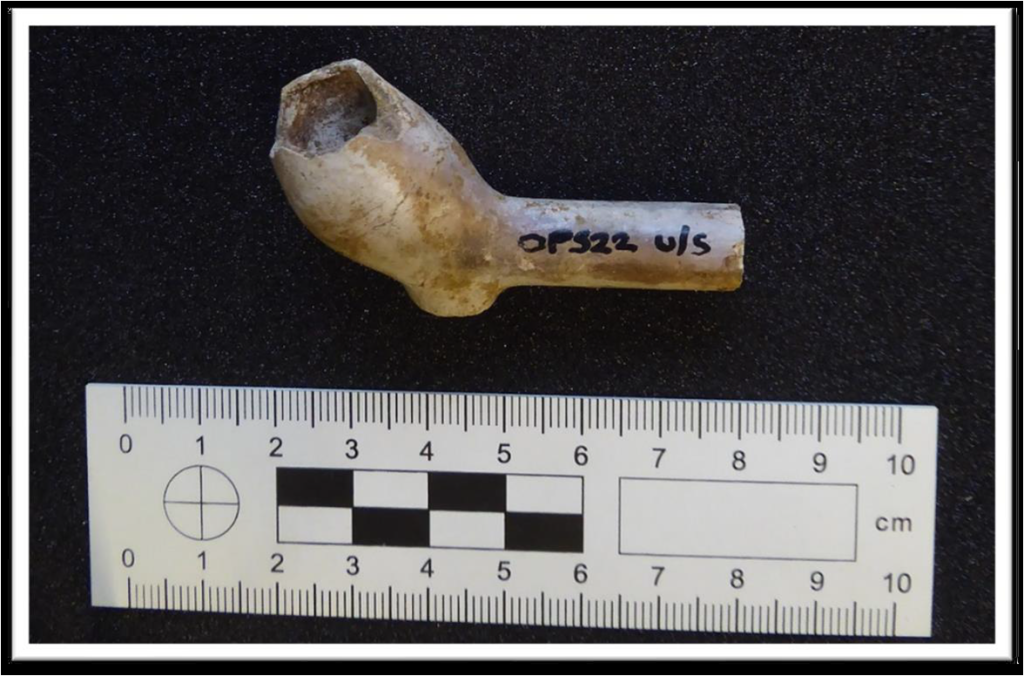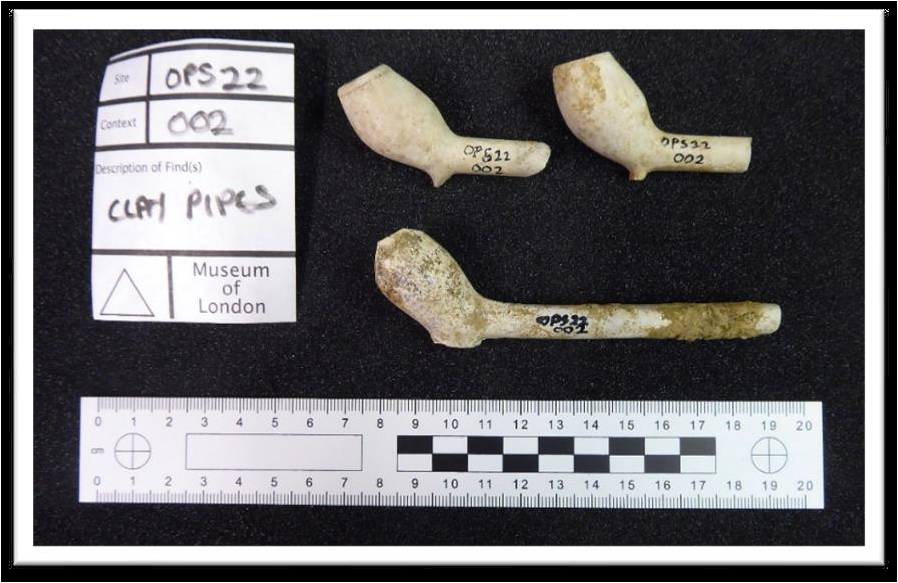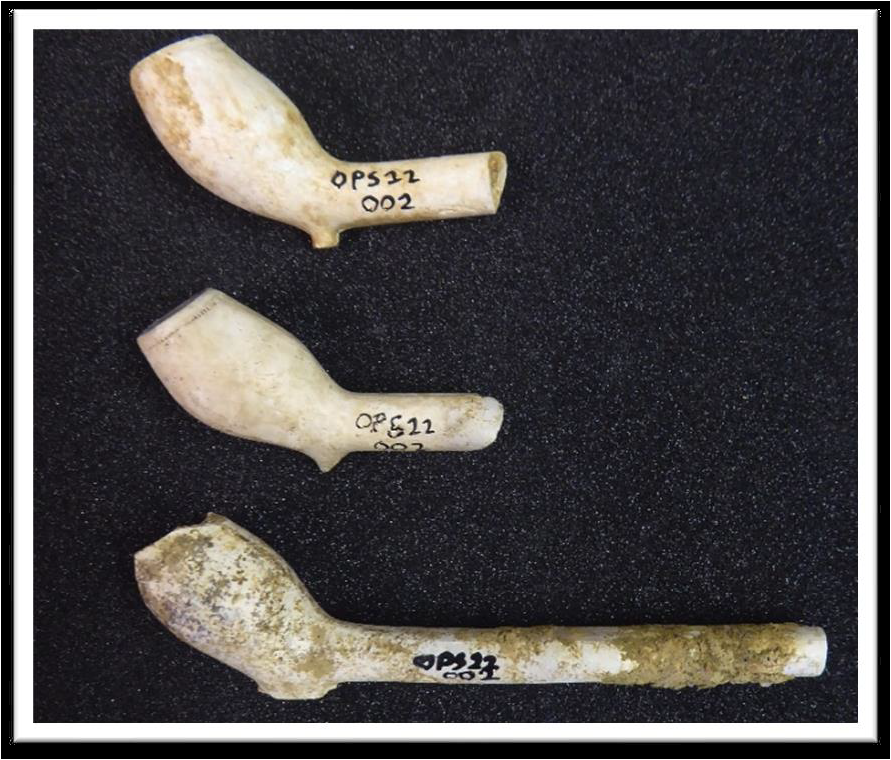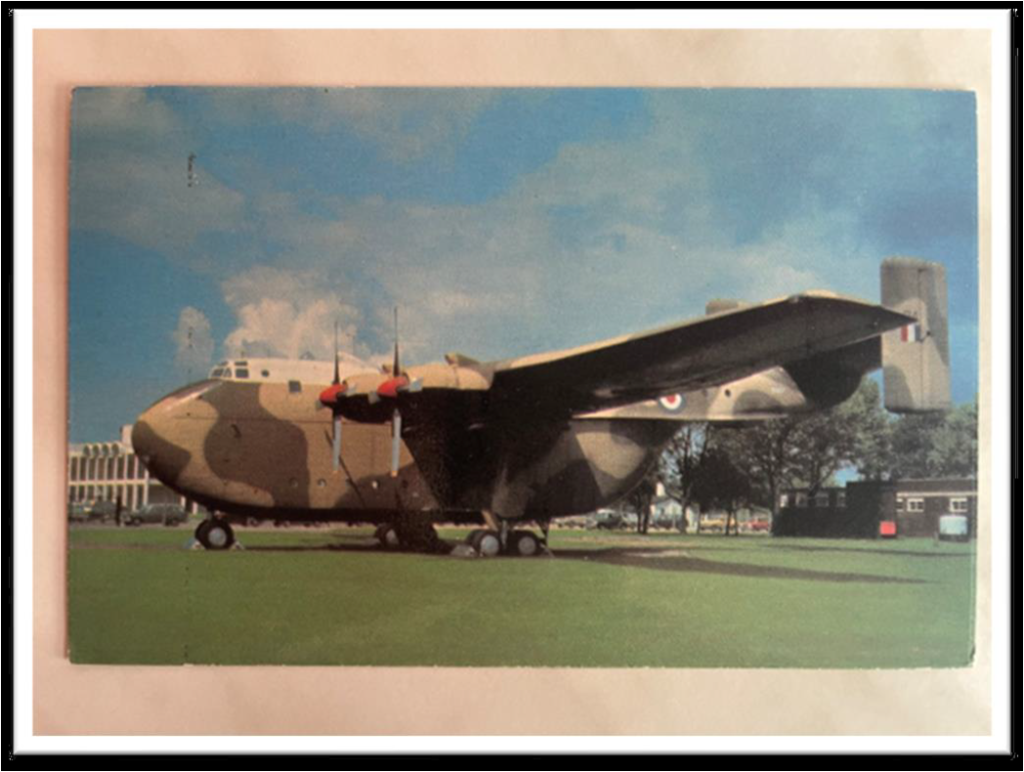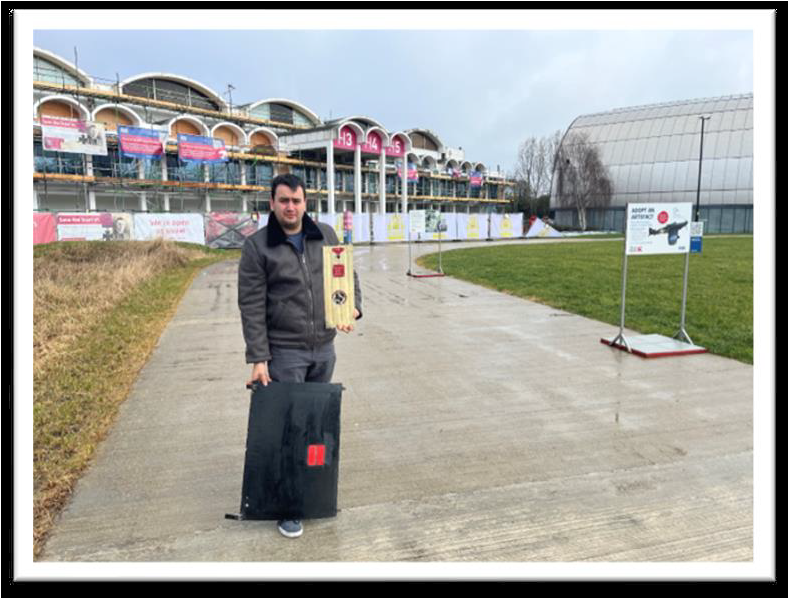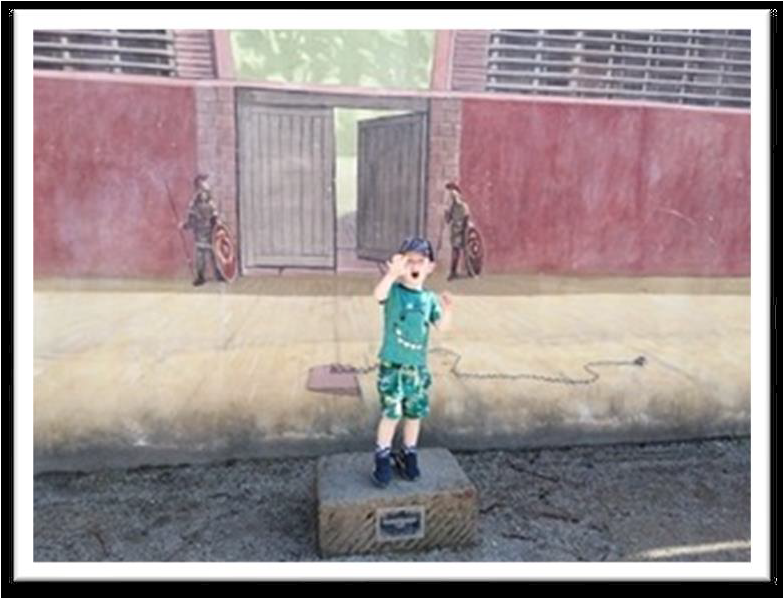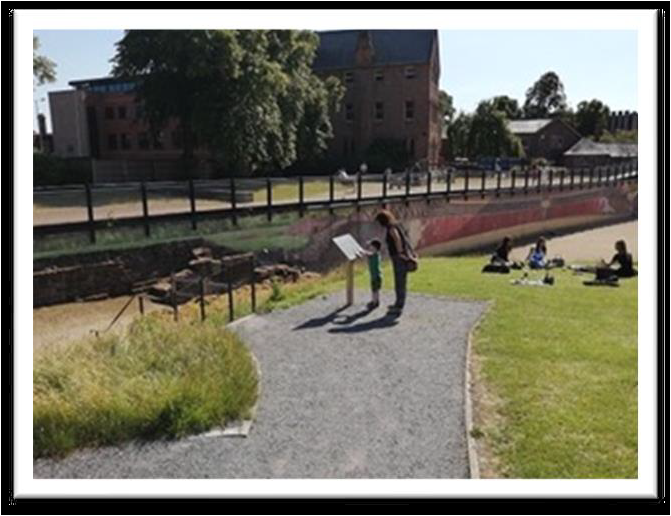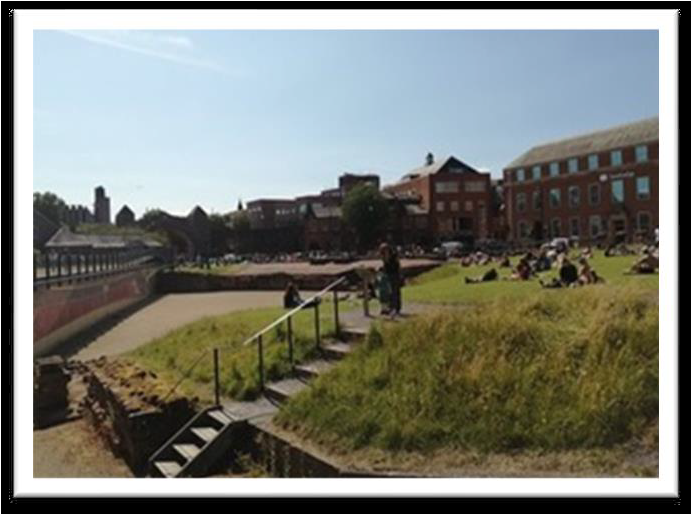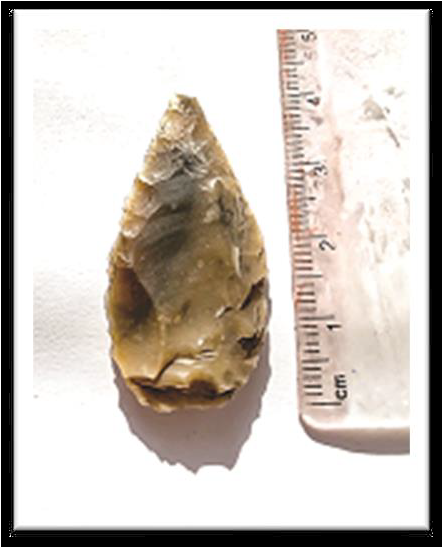
No. 625 April 2023 Edited by Sue Willetts
HADAS DIARY – Forthcoming Lectures and Events
We are pleased that we are able to resume lectures face-to-face following Covid, though lectures in winter may be on Zoom. Lectures are held in the Drawing Room, Avenue House, 17 East End Road, Finchley N3 3QE. 7.45 for 8pm. Tea/Coffee/biscuits available for purchase after each talk. (Cash please)
Buses 143, 125, 326 and 460 pass close by, and it is a five to ten-minute walk from Finchley Central Station on the Barnet Branch of the Northern Line. Bus 382 also passes close to Finchley Central Station.
Tuesday 11th April 2023 Robert Stephenson (Also with CoLAS)
The Thames: its myths and mysteries
Tuesday 9th May 2023 Bill Bass – Hopscotch in High Barnet: a HADAS dig.
Several of us worked on this short but enjoyable ‘backyard’ dig last year, directed by Bill, and the report is being serialised in the newsletter.
Tuesday 13th June 2023 HADAS Annual General Meeting
Followed by a lecture to be arranged.
****************************************************************************************************************
HADAS President – news:
At the AGM our long serving President Dr Harvey Sheldon will be formally retiring, and we are delighted that Jacqui Pearce has accepted the invitation to take up this position.
Due to the untimely death of Steve Brunning we are seeking a new membership secretary.
Informal enquiries to Don Cooper are very welcome.
Membership Renewals
It’s that time of the year again! However, HADAS have not increased their subscriptions again this year, therefore the amounts are: Full member £15, Additional member at the same address £5, Corporate member £15, under 18 or student under 25 in full time education £6. The HADAS membership year runs from 1st April to 31st March, and so this is to remind all members who pay by cheque that their renewal subscription will be due on or soon after 31st March 2023.
1
With the closure of many banks, it is helpful if payment is made by Bank Transfer using Account Number 00083254, Sort Code 40-52-40 (CAFBANK). Please include your surname and first initial in the reference field.
If you do need to pay by cheque, please post it to Don Cooper, Hadas, c/o Avenue House, 17 East End Road, Finchley N3 3QE.
Members who pay their subscription by standing order need take no action.
Following Steve Brunning’s untimely death in January 2023, there may be queries about membership issues, please address them to Don Cooper:
By email to chairman@hadas.org.uk or olddormouse@hotmail.com
By letter to Don Cooper, 59 Potters Road, Barnet, Herts EN5 5HS
By phone to 020 8440 4350 or 07802763285
We look forward to receiving your continued membership and thank you for supporting HADAS in its objectives.
Highgate Roman Kiln Project Information from Eric Morgan
The most complete Roman pottery kiln found in Greater London will be put on public display for the first time, thanks to a £243,550 grant by The National Lottery Heritage Fund to the charity Friends of Highgate Roman Kiln. In the 1960’s and 70’s archaeologists excavated the kiln from Highgate Wood in Haringey, which is managed by the City of London Corporation as a registered charity.
The pieces of this unique find have been in store beneath Bruce Castle Museum, inaccessible to the public. Made possible by money raised by National Lottery players, a joint project between Friends of Highgate Kiln, the City Corporation and Bruce Castle Museum will return the kiln to Highgate Wood to be displayed in a visitor centre from September 2024. The project is called Firing London’s Imagination: An Inclusive Approach to Highgate’s Roman Pottery Heritage.
The kiln is one of the best-preserved Roman pottery kilns found in the UK and thought to be the last one built by Roman potters who worked in Highgate Wood between 50 CE –160 CE to supply Londinium, the capital of Roman Britain, and southeast England with distinctive Highgate Ware pottery. The Friends of Highgate Roman Kiln was formed in 2018 to work with Bruce Castle Museum and the City Corporation to conserve the kiln, restore it to public view, and allow everyone to learn about an important aspect of London’s Roman Heritage.
My life in Ruins by Robin Densem Sue Willetts
On Tuesday 14th March HADAS members and a few visitors were treated to a well-illustrated talk by Robin on his career in Archaeology from his early days as a volunteer, as a digger and later a manager on archaeological projects taking a degree in Archaeology at the Institute of Archaeology in Gordon Square (1973-76) along the way. He gave us an overview of how archaeology had changed from the 1950/1960’s to the present day with the change to mostly developer funded projects. We were entertained and educated with this talk which was not recorded.
2
HADAS Excavation at ‘Hopscotch’ 88 High St, Barnet EN5 5SN
(Part 4 the finds – Clay Pipe, Tim Curtis and Andy Simpson.)
Site code OPS22
Only a limited number of stratified clay pipe bowl and stem fragments were recovered from the top two of the five contexts recorded during the excavation, though the area excavated was quite limited.
It is perhaps of note that none of the fragments featured decoration or makers’ marks of any sort, other than rim milling. The date range of the identifiable fragments, using the standard Atkinson and Oswald typology, is quite tightly dated to the Early Stuart/English Civil War/Restoration periods of the Seventeenth Century, with a total date range of some 70 years, 1610-1680.
The pipe fragments are discussed below, in context order.
UNSTRATIFIED
A single 50mm stem fragment plus bowl are recorded as unstratified.
In true archaeological tradition they were spotted on the spoil heap by a team member on the last day of the dig just as backfilling was about to begin. Dated 1610-1640, bowl type AO5, just a quarter of the bowl rim survives, but it does seem to have been fully milled, and is well burnished.
This is of course the earliest datable clay pipe bowl from the site.
CONTEXT 001
This is the modern/’Victorian’ topsoil/dumping context within which the vast majority of finds from the site were recovered – considerable quantities of roofing tile, pottery and both vessel and window glass in particular.
There are no clay pipe bowls and just twelve (12) well broken up and quite short stem fragments with a length of 20-40mm. Three bear signs of burning/heat through original use, and several have a very visible horizontal seam. Two lengths actually conjoin.
3
CONTEXT 002
Lying immediately below context 001, this context also featured quantities of CBM and pottery but just two small fragments of vessel glass.
There are 21 lengths of stem, six of them with traces of contemporary burning indicating actual use. Length 15-70mm, with no evidence of decoration or maker’s marks. Of the three bowl types represented, one is just a fragment of bowl side and appears to be type AO12, 1640-1670.
Also present is an almost complete bowl, missing its top rim, with heel plus 80mm of surviving stem attached, type AO13, dated 1660-1680.
Also of the ‘Restoration’ period are two fully milled and well burnished bowls of type AO15, also dated 1660-1680 as is the A013 bowl described above.
The clay pipes from context 002 (photos Bill Bass)
4
Return of the Beverley…sort of Andy Simpson
HADAS members of, shall we say, longer standing may well remember the Blackburn Beverley four-engine RAF transport aircraft that formerly stood at RAF Hendon East Camp from 1968, and latterly at the RAF Museum itself until 1990.
The Beverley on the former RAF Hendon East Camp, with the RAF Museum main building in the background; note the ‘Middle East’ camouflage scheme… (Commercial postcard)
Blackburn Beverley C.Mk.1 XH124 was one of 47 production aircraft of its type, and was built at Brough, East Yorkshire by Blackburn and General Aircraft Ltd, making its first flight on 1st April 1957, entering RAF service the following month. Robust and reliable, and with its distinctive rear loading doors, and carrying up to 94 troops or 70 paratroops, and a crew of four, the ‘Bev’ served with five RAF Squadrons; the Beverley saw widespread service in the Middle East, including Aden, Bahrein and Muharraq, and also in the UK, Singapore and Kenya. https://www.baesystems.com/en/heritage/blackburn-beverley
RAF popular belief had it that Beverleys did not need navigators, simply following the line of the four 2,850hp Bristol Centaurus 273 engine oil leaks left by fellow Beverleys as they cruised at around 170 mph across the desert! XH124 left Squadron service in April 1967 as the type was replaced by the turboprop Lockheed Hercules during 1967-68, of which a handful of later models remain in RAF service today, and after a period of storage made a final appearance at the RAF 50th Anniversary Royal Review at RAF Abingdon on 14 June 1968.
On 19 June 1968, with the new RAF Museum Hendon in the early planning stages (prior to opening in November 1972), XH124 became the last RAF fixed-wing aircraft – and at 63 tons one of the largest- to land at RAF Hendon before the runways were torn up to make way for the new 1700-home Grahame Park Council estate.
The aircraft flew in from RAF Abingdon; by the time it came to a halt after using only half the length of the main runway, its brakes were red hot and its unexpected appearance generated calls to the
5
emergency services from concerned members of the public ; it had clocked up 4,478 flying hours, and was struck off RAF charge the following day, being given the static maintenance serial 8025M. Six months later, on 22 December 1968, a final fixed wing landing occurred using the extant perimeter tracks – a small Piper Cherokee aircraft flying from Blackbushe airfield which became lost in bad weather, taking off the following day.
The airfield had officially closed to powered flying on 14 November 1957 as it became ever more surrounded by suburbia, although occasional accidental landings by individual American and German air force transport aircraft did still occur in 1964 ,1965, and 1967 and the local Air Training Corps 617 Volunteer Gliding School still used it for gliding until 31 March 1968, as still remembered by some HADAS members.
After some 21 years standing outside in all weathers, the MoD, as owners of the airframe, decided that the Beverley was too corroded for safe further display, and the financially constrained RAF Museum had no money for its restoration, so it was put up for tender for disposal in December 1989. The successful bidders were scrap merchants Turnidges, who surveyed the aircraft in early January 1990 and were due to complete the actual scrapping within 30 days of starting the task. On Friday 26 January 1990, a group of RAF Museum staff (including your author, as a newly minted and very junior curator) paid a final visit inside the aircraft. During this visit the smaller of the two panels shown in the photo below, ahem, ‘fell off’. It covered the escape rope which drooped down from the rear of the tail boom for crew to shin down in event of an emergency.
Scrapping of the aircraft commenced on Tuesday 30 January 1990, and on Valentines’ Day 1990 of all days I purchased the larger of the two panels, originating from the starboard outer engine, from the scrap merchants for £5. Scrapping proceeded using axes, cutting gear and a JCB to wrench off major sections, starting with the outer wings and tail section on 30 January; the engines were simply cut free and allowed to drop to the ground. The last of the Beverley, its cockpit section, left Hendon by road on Thursday 1st March 1990. One of the four-bladed propeller units was retained by the RAFM, but has yet to go on public display, currently being stored at the RAF Museum facility at MoD Stafford.
After some 30 years in my airing cupboard (!) it was time to hand over my two panels from XH124 to long term care, and I contacted the South Yorkshire Air Museum at Doncaster – South Yorkshire Aircraft Museum | Doncaster – they are located not far from where she was built and include other Blackburn built aircraft in their collection, including a small section of cockpit from fellow Beverley XL149. They were delighted to accept and despatched their volunteer Chris to meet me at Hendon for the handover in the wind and sleet at a point close to where XH124 latterly stood.
One other Beverley cockpit/flight deck (from XB261) is preserved, and the last fairly complete Beverley airframe, XB259, currently hangs on by a rather decayed thread on Humberside.
6
South Yorkshire Aircraft Museum volunteer Chris takes delivery of the two Beverley panels at the RAF Museum Hendon (now known as RAFM London), Friday 10 March 2023.
References
Oliver, D Hendon Aerodrome – A History Airlife 1994
Renwick, A RAF Hendon The Birthplace of Aerial Power Crecy 2012
Thetford. O Aircraft of the Royal Air Force since 1918 Putnam 1995
What the Romans did for my grandson Janet Mortimer
As memories of the Pandemic lockdowns fade, and in the certainty that Sue Gray will not be reading this, I can admit to making the not quite essential trip to visit my son and daughter-in law at their home in Lancashire in June 2020 as I hadn’t seen them in many months and the grandchildren were growing up fast.
Whilst there we decided to have a day out to Chester. In the car on the way there I explained to my then 3 year-old grandson, Frankie, who the Romans were, how they had come over to conquer us, and how they had built things that we would still be able to see.
He seemed very excited about this and, when we got to the car park, there was a large map with a picture of a Roman soldier on it. I pointed it out to him and said “Look there is a Roman” only to see the disappointment etched on his little face. He didn’t want to look at pictures of Romans. He had expected to see legions of them marching around the streets. I tried to explain that they were there two thousand years ago, but trying to explain the concept of time to a 3 year-old for whom the week before their birthday seems like a thousand years was not an easy one!
Sadly the Museum was shut, but we visited some of the Roman sites like the gardens and the amphitheatre and Frankie did seem fascinated by them. We stood in the centre of the amphitheatre and he liked my tales of how the gladiators would bravely fight lions. I am not really sure whether there
7
were any lions in Chester (except perhaps at the Zoo) but grandmothers are allowed a bit of poetic license.
Despite the lockdown there were lots of people in the town that day. Although nearly everything was closed, we managed to find a sandwich shop that was open and headed for the park, also needing a toilet break. There were public toilets there, but they had a notice saying they were closed due to Covid restrictions. It was amusing to see other people heading for them, watch the anguish on their faces when they realised they were closed, then watch them furtively head for the nearest clump of bushes. I am not sure which was more dangerous – the risk of catching Covid or getting cholera. It was a good day out and I am sure we will go back again when more things are open to the public, especially the toilets!
Ancient stone arrowhead comes to light in Coldfall Wood in Muswell Hill Ann Bronkhorst.
(Reproduced with permission from The Archer (www.the-archer.co.uk) January 2023)
“One day last year I was watching a bird. I looked up, then down, and there it was at my feet.” Philip Hogg, a Haringey resident and a regular dogwalker, had almost trodden on an early Neolithic arrowhead in Coldfall Wood. Luckily he was not barefoot.
The photo shows a leaf-shaped, nicely napped object, still capable of giving a cut or two. It is thought to date from 4,500 to 1,500 BC and is one of many small archaeological finds such as weapon parts, pottery shards and coins discovered in London over the years. This, however, is much earlier than most such finds. In the 1940s a Neolithic axe head was found in Windermere Road, Muswell Hill, but little else has emerged in Haringey. As Adam Single of Historic England says, “Our understanding of the early human occupation of the area is not great.” Adam is one of several experts consulted about this arrowhead. He clarified its ownership: like most similar finds it belongs to the landowner, in this case Haringey, and not the finder. Digital information about it will become available to anyone, however, on the Portable Antiquities Scheme site at finds.org.uk. Another helpful source of expertise in this case was the Finds Liaison Officer at the Museum of London, Stuart Wyatt.
Where should the actual arrowhead find a home? Philip should hear more this month from the experts who are examining it. The consensus is Bruce Castle Museum in Haringey, where the curator, Deborah Hedgecock, hopes to welcome it to the museum’s fascinating and varied collection. The Archer
8
(appropriately) will tell readers when and where to view it. Meanwhile, back in the wood, the arrowhead’s exact resting place for the last 4,000 or so years must remain unidentified.
Local news: Hendon Hub – The Burroughs – Middlesex University plans – update.
Campaigners are calling for a major development planned for Hendon to be scaled down, warning it poses “great risks” to a “historic neighbourhood”. Residents’ group Save Hendon has urged Middlesex University to reduce the size of the Hendon Hub – a Barnet Council-led scheme that is set to see hundreds of student flats built on sites in The Burroughs and Church End. More details in this link from the Barnet Post.
Professor Brad Blitz, an administrator of the Hendon Residents Planning Forum, which represents 2,500 residents, has written to the university to urge it to scale down the scheme. He told the Local Democracy Reporting Service residents who saw the latest plans were “shocked” to find their scale was apparently unchanged, with the only proposed alterations to be made to internal space. Professor Blitz said if the council could make changes to the library, he believed it could make further amendments. Cllr Houston has indicated that the project will be going ahead, and that further substantive changes to the scheme are unlikely. He pledged to meet with Save Hendon campaigners “in a couple of weeks’ time” to speak to them again about their concerns.
New exhibitions
Cambridge, Fitzwilliam Museum, Islanders: The Making of the Mediterranean. 24th Feb – 4th June 2023. Many of the more than 200 objects from three of the largest Mediterranean islands, Cyprus, Crete and Sardinia will be seen in the UK for the first time. This exhibition helps us understand the ways these island cultures reflected, and even shaped the larger Mediterranean world with its migrations and movement of peoples.
Oxford. Ashmolean Museum. Knossos: Myth and reality. From 10 Feb – 30 Jul 2023. According to legend, an elaborate labyrinth was built at Knossos on the island of Crete to hold a ferocious Minotaur. The palace of Knossos, discovered and excavated over 100 years ago, was the centre of a Bronze Age civilisation of people we now call the Minoans, named after the legendary King Minos. This is the first UK exhibition to focus on Knossos. It will include over 100 objects which have never left Crete and Greece before, alongside discoveries from the Ashmolean’s Sir Arthur Evans Archive and an exclusive experience of Knossos Palace from the acclaimed video game Assassin’s Creed Odyssey. His archive at the Ashmolean has been central to our understanding of the site of Knossos, and many of his excavation plans, artworks and records will be on display alongside objects from the site.
Mea Culpa Corner Andy Simpson
In my review of the newly published book on the Life and Times of Dr Henry Hicks of Hendon in the previous newsletter, I managed to miss out the most important detail of all – the authors’ name! The very understanding author who responded to my apology sent with a copy of said newsletter is Dyfed Elis Gruffydd, who kindly says of HADAS ‘It’s good to see such an active organisation’.
9
Other Societies’ Events Eric Morgan
Not all Societies or Organisations have yet returned to pre-covid conditions. Please check with them before planning to attend.
Friday 21st April, 7.30 pm. Failed to Return; Amy Johnson and Leslie Howard. Talk by Tony Eaton. On their disappearance on board aircraft. Wembley History Society. St. Andrew’s Church Hall (behind St. Andrew’s New Church), Church Lane, Kingsbury, NW9. Visitors £3. Refreshments available.
Tuesday 25th April, 7.45 pm. Saving for old buildings. Talk on zoom. An introduction to the Society for the Protection of Ancient Buildings by Douglas Kent (Technical and Research Director, SPAB)
St. Alban’s Architectural and Archaeological Society. Talk will explain the society’s approach to caring for old buildings and present an outline the activities it undertakes today plus an account of the award-winning SPAB work the speaker has carried out on his own Grade 1 listed Medieval house in Saffron Walden in Essex. www.stalbanshistory.org for details. Non-members may be charged £5.00
Thursday 4th May, 6pm. Lecture, Gresham College, Barnard’s Inn Hall, The History of Bart’s Hospital; Bart’s at 900. Talk by Charles Knight. Ticket required. Register www.gresham.ac.uk/whats-on/barts-900 and view on-line. St. Bartholomew’s is the oldest hospital in London still operating on its original site. Telling its history from 1123 to today, via its people, buildings and the events that defined this iconic medical institution.
Tuesday 9th May, 6.30 pm. LAMAS. Joint event with Prehistoric Society. Talk on zoom. by Andy Dakin (MOLA). Excavations of a Roman Cemetery, Hoard and Prehistoric and Post-Medieval remains of Principal Place, London. Incl. inhumations, cremations and a large hoard of Roman Coins, and discussion of extensive remains of the C17-18th buildings and yards and the remains of the early C19th Curtain Road Gasworks. Please book via www.lamas.org.uk/lectures.html.
Wednesday 10th May, 8pm. The Brunel family-father, son and grandson Talk on zoom by Bill McNaught. Hornsey Historical Society. Please email hornseyhistoricalchairman@gmail.com for link. Visit www.hornseyhistorical.org,uk. NB The speaker for the Wed. 12th April talk mentioned in the March newsletter is Suzanne Bardgett.
Monday 15th May, 8pm. Monarchs, Courtiers, Technocrats and Kitchen Boys of Elsyng Palace. Talk by Dr. Martin Dearne E.A.S.) Enfield Society. Jubilee Hall, 2, Parsonage Lane / jnc. Chase Side, Enfield, EN2 OAJ. Non-members £1.
Wednesday 17th May, 7.30 pm. Grunwick Strike, 1976-78. Talk by Christine Coates. Willesden Local History Society. St. Mary’s Church Hall, bottom of Neasden Lane, NW10 (Round corner from Magistrates’ Court). May also be on zoom. If not a member buy a ticket (£3) For details. please visit www.willesden-local-history.co.uk.
10
Thursday 18th May, 7pm. The Archaeology of Wren given by John Schofield. London Archaeologist. UCL, Institute of Archaeology. 31-34, Gordon Square, WC1H OPY. AGM followed by Annual Lecture. May also be on zoom. On the 300th anniversary of the death of Sir Christopher Wren and reviewing the archaeology of St. Paul’s and the parish churches in the City. Please book on www.londonarchaeologist.org.uk.
Thursday 18th May, 7.30 pm. Pickford’s Stables. Talk by Peter Darley (Camden Railway Heritage Trust Camden History Society) Primrose Hill Community Library, 14, Sharpleshall Street, NW1 8YN. Non-members £2 at the door. Please visit www.camdenhistory.org for details.
Wednesday 24th May, 7.45 pm. Westminster at War: How the Luftwaffe destroyed The House of Commons. Talk by Barry Hall. Friern Barnet and District Local History Society, North Middx. Golf Club. The Manor House, Friern Barnet Lane, N20 0NL. Preceded by AGM. Please visit www.friernbarnethistory.org.uk click on programme or phone 020 8368 8314 for up-to-date details. (David Berguer, Chair) Non-members £2. Bar available.
Thursday 25th May, 6.30pm. A Tour of Avenue House and Gardens. Finchley Society. Avenue (Stephens’) House, 17, East End Road, N3 3QE. Please note earlier time, For further details. please visit www.finchleysociety.org.uk Non members £2.
Saturday 27th May. Alexandra Palace. Alexandra Palace Way, N22. The Big Birthday Party at Ally Pally, Alexandra Palace celebrates its 150th Anniversary this year. This Special Event’s theme is “Living Archives” with focus on connections between Heritage and Current Activities. Hornsey Historical Society should be represented here.
++++++++++++++++++++++++++++++++++++++++++++++++++++++++++++++++++++
With many thanks to this month’s other contributors: Bill Bass, Eric Morgan, Janet Mortimer, Andy Simpson
++++++++++++++++++++++++++++++++++++++++++++++++++++++++++++++++++++
11
Hendon and District Archaeological Society
Chairman Don Cooper, 59, Potters Road, Barnet EN5 5HS (020 8440 4350)
e-mail: chairman@hadas.org.uk
Hon. Secretary Janet Mortimer, 34, Cloister Road, Childs Hill, London NW2 2NP
(07449 978121) e-mail: secretary@hadas.org.uk
Hon. Treasurer Roger Chapman, 50, Summerlee Ave, London N2 9QP
(07855 304488) e-mail: treasurer@hadas.org.uk
Membership Secretary Vacancy
While we have no Membership Secretary
for the present, please address any correspondence such as change of member addresses or other miscellaneous correspondence to:
HADAS, c/o Avenue House, 17 East End Road, Finchley, London N3 3QE
Website at: www.hadas.org.uk – join the HADAS email discussion group via the website.
***
12

